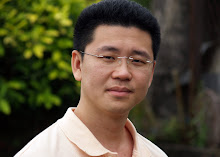Driver with most race wins to become 2009 champion
Formula One racing’s governing body, the FIA, has approved a change to the points systems for this year’s drivers’ championship, which will see the title awarded to the driver with the most race wins. The rest of the standings, from second to last place, will be decided by the current points system.
If two or more drivers finish the season with the same number of wins, the title will be awarded to the driver with the most points, the allocation of points being based on the existing 10, 8, 6 etc. structure. The constructors’ championship is unaffected.
The FIA’s World Motor Sport Council accepted the proposal for the new system from Formula One Management at a meeting in Paris on Tuesday. An alternative proposal to change the points awarded to drivers finishing in first, second and third place to 12, 9 and 7 points respectively was rejected.
Further changes agreed by the Council included minor tweaks to the testing regulations, increased media duties for teams and drivers at races, and a cost capping option for 2010. Honda’s request to have their entry changed to the Brawn GP Formula One Team was also approved.
The World Motor Sport Council’s decisions in full:
A number of measures were agreed to help reduce costs and increase interest in the FIA Formula One World Championship.
2009 Formula One Regulations
Points
The WMSC accepted the proposal from Formula One Management to award the drivers’ championship to the driver who has won the most races during the season. If two or more drivers finish the season with the same number of wins, the title will be awarded to the driver with the most points, the allocation of points being based on the current 10, 8, 6 etc. system.
The rest of the standings, from second to last place, will be decided by the current points system. There is no provision to award medals for first, second or third place. The Constructors’ Championship is unaffected.
The WMSC rejected the alternative proposal from the Formula One Teams’ Association to change the points awarded to drivers finishing in first, second and third place to 12, 9 and 7 points respectively.
Testing
Teams will be allowed to carry out three one day young driver training tests between the end of the last event of the Championship and 31 December of the same year. Drivers are eligible only if they have not competed in more than two F1 World Championship Events in the preceding 24 months or tested a Formula One car on more than four days in the same 24 month period.
Teams can also conduct eight one day aerodynamic tests carried out on FIA approved straight line or constant radius sites between 1 January 2009 and the end of the last Event of the 2009 Championship.
Media
The FIA will publish the weights of all cars after qualifying at each Event.
For greater clarity for spectators and media, wet tyres have been renamed “intermediate” and extreme-weather tyres renamed “wet”.
On the first day of practice all drivers must be available for autograph signing in their designated team space in the pit lane.
All drivers eliminated in qualifying must make themselves available for media interviews immediately after the end of each session.
Any driver retiring before the end of the race must make himself available for media interviews after his return to the paddock.
All drivers who finish the race outside the top three must make themselves available immediately after the end of the race for media interviews.
During the race every team must make at least one senior spokesperson available for interviews by officially accredited TV crews.
A number of further amendments were adopted for the 2009 Technical Regulations. Full details available on www.fia.com.
2010 Formula One Regulations
Budgets
As an alternative to running under the existing rules, which are to remain stable until 2012, all teams will have the option to compete with cars built and operated within a stringent cost cap.
The cost cap is £30m (currently approximately €33 or $42m). This figure will cover all expenditure of any kind. Anything subsidised or supplied free will be deemed to have cost its full commercial value and rigorous auditing procedures will apply.
To enable these cars to compete with those from teams which are not subject to cost constraints, the cost-capped cars will be allowed greater technical freedom.
The principal technical freedoms allowed are as follows:
1. A more aerodynamically efficient (but standard) under body.
2. Movable wings.
3. An engine which is not subject to a rev limit or a development freeze.
The FIA has the right to adjust elements of these freedoms to ensure that the cost-capped cars have neither an advantage nor a disadvantage when compared to cars running to the existing rules.
The Honda Racing F1 Team requested to change its name to the Brawn GP Formula One Team. The WMSC accepted this request on the basis that the team is, in effect, a new entry in the FIA Formula One World Championship. The contract the team had with the FIA was to run as ‘Honda’, which they are no longer in a position to do. However, the standard fee required for a new entry has been waived.


No comments:
Post a Comment